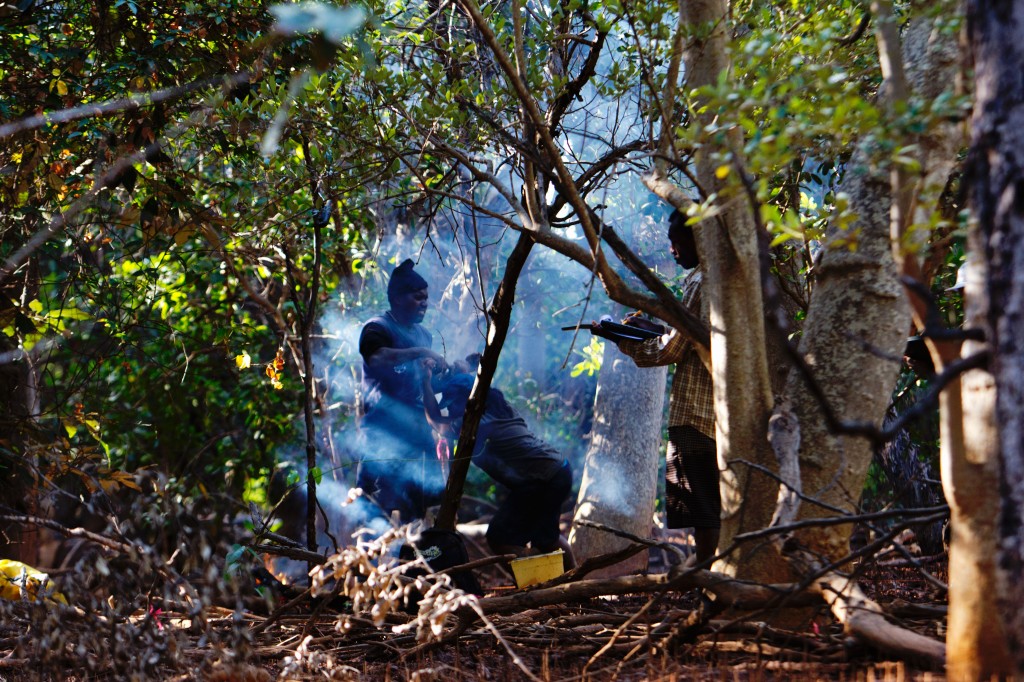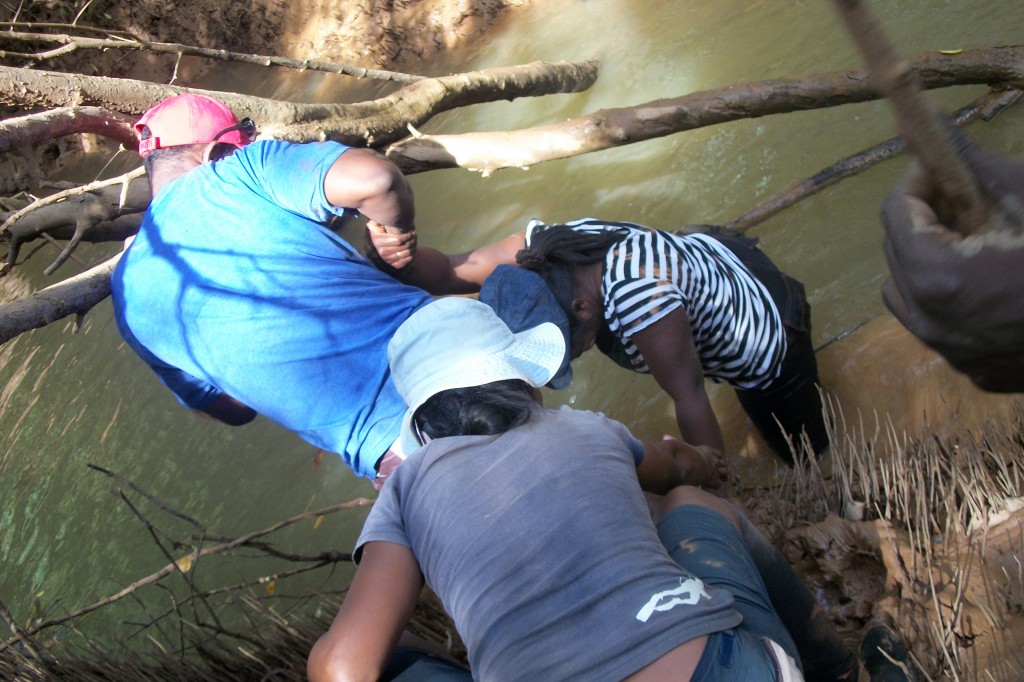by Zo Andriamahenina, Blue Forests Research Assistant, Madagascar
My first time working in the mangrove forest was in February 2012. Before, I had never walked into one, so I could not picture what we would see or find in this forest. Since that first time in February 2012, we have visited many areas of mangrove along the west and northwest coast of Madagascar, including Mahajamba Bay and Ambaro Bay.
Our day starts with departing from the host village at 7am, after a breakfast of coffee and lots of rice. We never have enough time before work to cook our lunch, so for most expeditions we engage someone from the community to cook lunch and dinner and we bring the lunch along. Sometimes we walk faraway for our target study plot but sometimes it’s close. In total we can go as far as 40 km by boat or 15 km by foot (both ways!), with the climate being very hot. There is no set time for lunch, it depends on our work and of course the tides. When the time is right we stop and take a little break.
Each expedition has many experiences that are new and exciting for us, such as working in the mangroves during the cyclone season! Surrounded by the tide and stranded on an island; braving the waves in pirogues on the way to the field and getting soaking wet; walking through a channel in which crocodiles live; and always fighting wasps off everywhere you go.
Considering all of the challenges, our work itself is not as hard as it sounds. We take above and below ground carbon stock measurements of the mangrove trees and soil, count forest regeneration and measure the canopy cover.
There are eight of us to do all of the measurements and normally a plot takes between 45 minutes to 90 minutes maximum. But the aspect that is hardest about this work is the distance between the target plot and the road. To access the target we must deal with trudging through dense forest with big roots and very muddy terrain. We also need to cross many water channels between two successive plots; that is why we always feel exhausted when the field season comes to an end. Also our bodies become very dark, “miha mainty” in Malagasy, and we get thinner!
On the other hand, it’s not horrible at all to work in the mangrove forest – you just need to be ready mentally and enjoy your job like me. The mangrove forest has lots of good things, like a beautiful landscape, many kinds of birds looking at you and whistling everywhere, and seeing things like a family of dolphins in the big channels! The positive environment and energy between the team helps us to have enough motivation for the hard work in the mangrove forest. Furthermore, knowing that our work will someday help communities have a sustainable future managing the mangroves, makes it all worth it!




